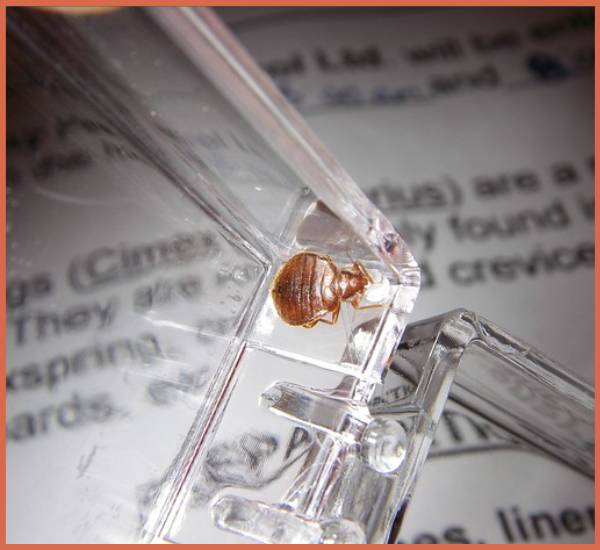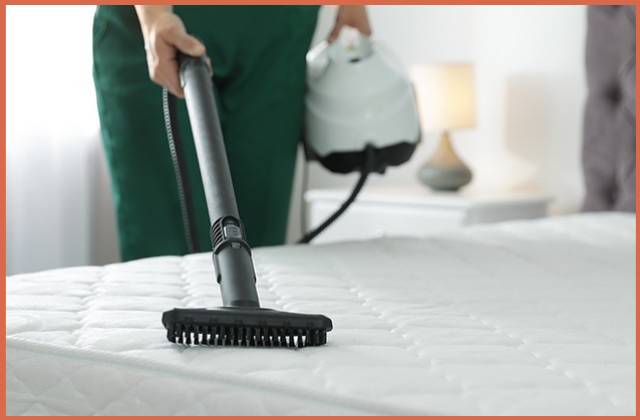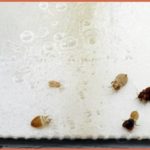Early detection of bed bug infestations in hotels is crucial to ensure guest satisfaction and safety. One effective method to achieve this is by implementing proactive measures on how to test for bed bugs in Hotels. Conducting effective screening tests can help identify and address problems early, thus preventing the spread of these pests. In this article, we will explore several tips and techniques for conducting bed bug detection tests in hotels effectively.
Learn How To Test For Bed Bugs In Hotels Correctly
1. Thorough Room Inspection
The first stage in testing hotels for bed bugs is to conduct a thorough inspection of the room. This involves meticulously checking all areas where bed bugs could hide, such as the seams and folds of the mattress, behind the headboard of the bed, in crevices of furniture, as well as in curtains and carpets.

Using a flashlight and a magnifying glass can make it easier to spot these tiny insects and their characteristic signs, such as blood spots or droppings, or the insects themselves.
2. Regular Inspection of Bedding
Regular inspection of bedding is a crucial aspect of bed bug detection and prevention in hotels. Bed bugs are nocturnal pests that primarily feed on human blood while their hosts are asleep, making bedding an ideal hiding place for them. By regularly inspecting bedding, hotel staff can catch bed bug infestations in their early stages before they have a chance to spread.
Visual inspection, aided by a flashlight and magnifying glass, helps identify live insects, shed skins, fecal stains, and eggs. Immediate action should be taken upon detection of bed bugs, including removal of infested bedding, treatment, and thorough cleaning to prevent further spread. By prioritizing regular inspection of bedding, hotels can effectively prevent and address bed bug infestations, ensuring a safe and comfortable environment for guests.
3. Sealing Cracks and Crevices
Sealing cracks and crevices is a critical strategy in the battle against bed bugs in hotels. These pests are adept at finding hiding spots in tiny cracks and gaps in walls, floors, furniture, and baseboards. By meticulously sealing these entry points, hotels can significantly reduce the opportunities for bed bugs to infiltrate guest rooms and establish infestations.

The process of sealing cracks and crevices involves identifying and filling any openings where bed bugs could enter or hide. This may include caulking gaps around baseboards, sealing cracks in walls and ceilings, and using weather stripping to close gaps around doors and windows. By creating a barrier that bed bugs cannot penetrate, hotels can effectively fortify their defenses against these resilient pests, ultimately enhancing the overall guest experience and safeguarding their reputation.
4. Use of Detection Traps
The use of detection traps is a proactive measure that can significantly aid in identifying bed bug infestations within hotel rooms. These traps are strategically placed around beds and other furniture to attract and capture bed bugs, allowing for early detection before an infestation becomes widespread. By regularly monitoring these traps, hotel staff can quickly assess the presence and severity of bed bug activity, enabling prompt action to address the issue.
Moreover, the use of detection traps not only helps in identifying bed bug infestations but also demonstrates a commitment to proactive pest management and guest satisfaction. Guests will appreciate the hotel’s proactive approach to pest control, knowing that measures are in place to ensure their comfort and safety. Additionally, the data collected from these traps can inform ongoing pest management efforts, allowing hotels to continuously improve their strategies and maintain a pest-free environment for their guests.
5. Staff Training in Early Identification
Staff training in the early identification of bed bugs is a fundamental aspect of maintaining a proactive approach to pest management in hotels. Equipping hotel staff with the knowledge and skills to recognize the signs of bed bug infestations enables them to detect and address potential issues swiftly, minimizing the risk of guest encounters with these pests. Training should include education on identifying bed bug bites, inspecting rooms for telltale signs such as fecal stains and shell skins, and protocols for reporting and addressing suspected infestations.
Furthermore, empowering staff with the tools and resources to respond effectively to bed bug sightings enhances guest satisfaction and reinforces the hotel’s commitment to providing a clean and comfortable environment. By investing in comprehensive training programs, hotels not only bolster their pest control efforts but also foster a culture of vigilance and responsiveness among their team members, ensuring a positive guest experience and preserving the reputation of the establishment.
6. Hiring Trained Bed Bug Detection Dogs
Hiring trained bed bug detection dogs presents a highly effective and efficient method for identifying bed bug infestations in hotels. These specially trained canines possess an unparalleled sense of smell, enabling them to detect even the slightest presence of bed bugs with remarkable accuracy. By utilizing bed bug detection dogs, hotels can swiftly and precisely pinpoint infestations, facilitating targeted treatment and minimizing disruption to guests.

Furthermore, the use of bed bug detection dogs not only enhances the speed and accuracy of detection but also instills confidence among guests in the hotel’s commitment to pest control. Guests will appreciate the thoroughness of the hotel’s efforts to maintain a clean and pest-free environment, ultimately contributing to a positive guest experience and fostering loyalty. Additionally, the investment in hiring bed bug detection dogs can lead to long-term cost savings by preventing the escalation of infestations and mitigating potential damages to the hotel’s reputation.
7. Washing Curtains and Carpets
Regularly washing curtains and carpets is a vital step in the prevention and control of bed bug infestations in hotels. These textiles provide ideal hiding places for bed bugs, offering dark, secluded spaces where they can breed and thrive undetected. By implementing a routine cleaning schedule that includes washing curtains and carpets at high temperatures, hotels can effectively eliminate any bed bugs or eggs present, thus reducing the risk of infestations spreading throughout the property.
Moreover, maintaining clean and sanitary curtains and carpets not only contributes to pest control efforts but also enhances the overall guest experience. Guests will appreciate the fresh and hygienic environment provided by the hotel, fostering a positive impression and encouraging repeat visits. Additionally, regular washing of curtains and carpets can prolong their lifespan and maintain their aesthetic appeal, ensuring that the hotel maintains a welcoming and attractive ambiance for guests to enjoy.
8. Inspection of Furniture and Decorative Items
Regular inspection of furniture and decorative items is essential in the battle against bed bugs in hotels. These items provide numerous hiding spots for bed bugs, including cracks, crevices, and seams where these pests can conceal themselves during the day and emerge at night to feed. By conducting routine inspections of furniture and decorative pieces, hotel staff can detect signs of bed bug activity early on, allowing for prompt intervention to prevent infestations from spreading.
Furthermore, thorough inspection of furniture and decorative items demonstrates a commitment to guest satisfaction and safety. Guests expect hotels to provide clean and pest-free accommodations, and regular inspections reassure them that proactive measures are in place to uphold these standards.
9. Collaboration with Professional Pest Control Services
Collaborating with professional pest control services is a strategic approach for hotels to effectively combat bed bug infestations. These experts possess the knowledge, experience, and specialized equipment necessary to accurately identify and address bed bug issues. By partnering with pest control professionals, hotels can benefit from comprehensive inspections, targeted treatments, and ongoing monitoring to ensure a thorough eradication of bed bugs and prevent future infestations.

Moreover, collaborating with professional pest control services demonstrates a proactive commitment to maintaining a clean and pest-free environment for guests. Guests will appreciate the hotel’s dedication to their comfort and safety, fostering trust and loyalty. Additionally, by entrusting bed bug management to experts in the field, hotels can streamline their pest control efforts, saving time and resources while effectively safeguarding their reputation and preserving guest satisfaction.
10. Transparent Communication With Guests
Transparent communication with guests regarding bed bug prevention and control measures is paramount for maintaining trust and ensuring guest satisfaction in hotels. Guests value honesty and openness, especially when it comes to matters that affect their comfort and safety during their stay. By proactively informing guests about the hotel’s policies and procedures for bed bug prevention, as well as how to report any concerns they may have, hotels demonstrate their commitment to addressing potential issues swiftly and effectively.
Moreover, transparent communication helps to manage guest expectations and mitigate any concerns they may have about bed bugs. By providing clear and accurate information about the steps taken to prevent and address bed bug infestations, hotels can reassure guests and alleviate any anxieties they may have. This transparent approach fosters a positive guest experience and cultivates a trusting relationship between the hotel and its guests, ultimately contributing to guest satisfaction and loyalty.
Conclusion:
Effective bed bug detection in hotels requires a proactive approach and a combination of inspection, prevention, and collaboration with pest control experts. By following these tips, hotels can maintain a safe and comfortable environment for their guests, avoiding the negative impact of bed bug infestations on their reputation and operations.









